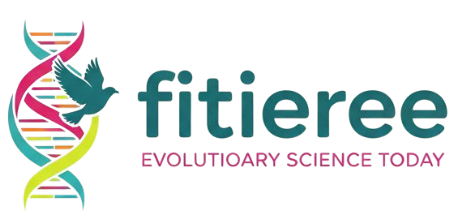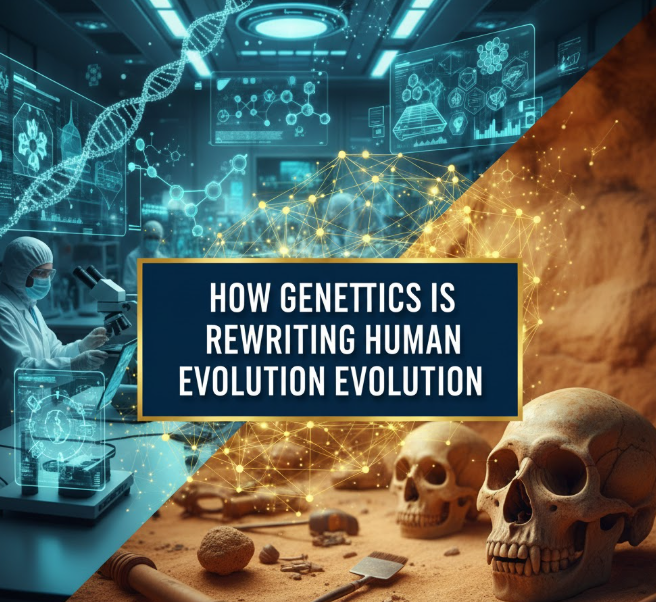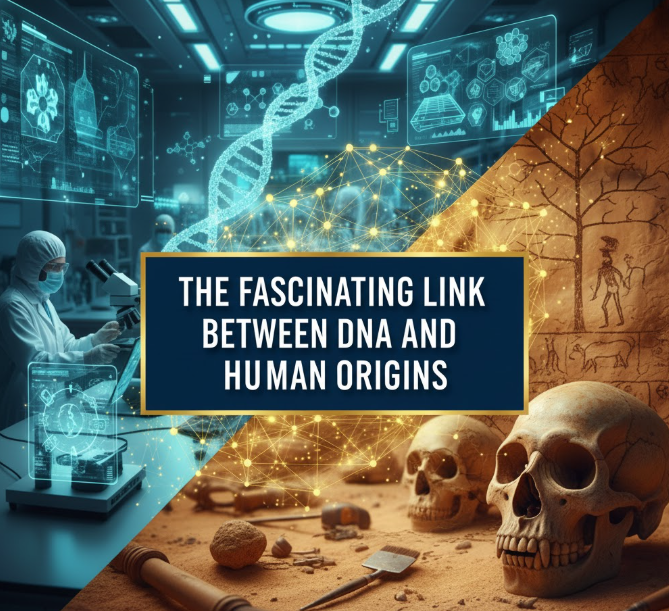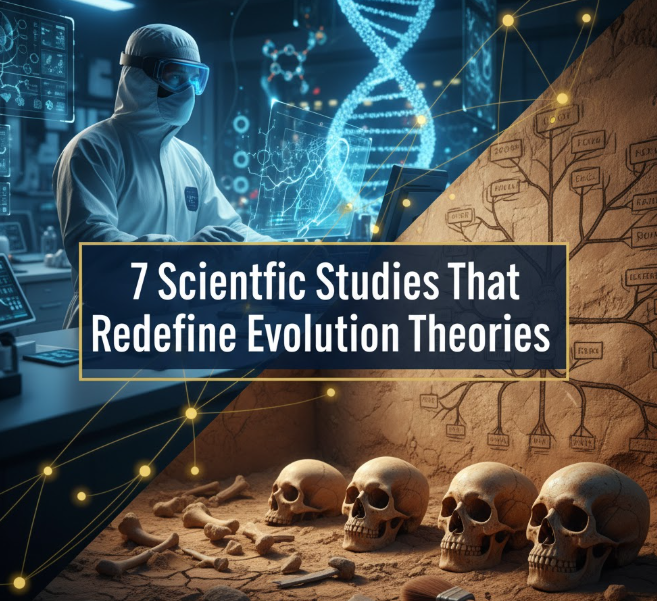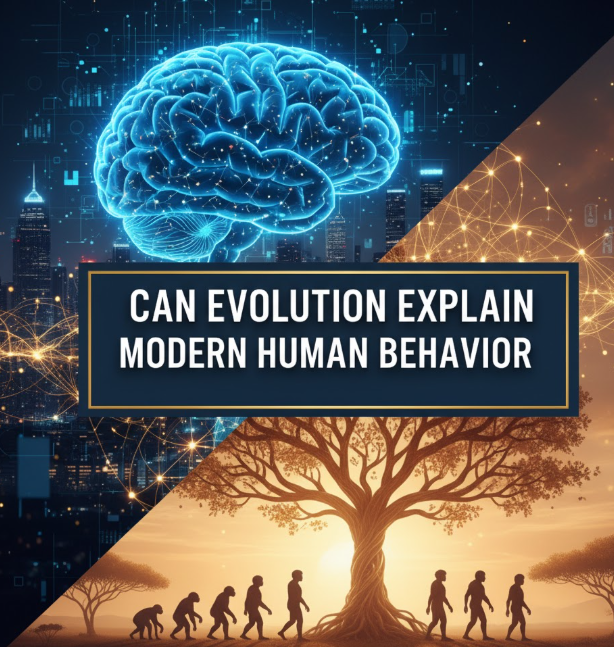For most of human history, we could only speculate about how our ancestors lived. Old bones were studied, species were compared and the puzzle of where we came from was reconstructed. But now, genetics has provided us with a powerful new tool—and it’s revolutionizing everything we thought we knew about human evolution.
Consider DNA to be our memories recorded in a language we are just starting to understand. Every cell in your body is this book, and it chronicles the story not only of you but of every human who preceded you. This book too scientists have learned to read more finely in the past two decades. What they are discovering is shocking, thrilling and sometimes completely surprising.
The tale of human evolution is too simple-minded — even misleading. It’s messier, more interesting and a surprise-filled place. Several different human species — or possibly subspecies of a single human type — lived at the same time. They fell in love, had children and passed on their genes in ways we never dreamt of. Some of us became suited to high mountains; others, cold conditions and helpful genes from species that aren’t quite human anymore.
This article will lead you through the newest findings in genetics and take on argument that is subverting centuries of deeply held beliefs: that tens of thousands of years ago, a group of peoples sallied forth from Africa to spread their genes everywhere, all but obliterating earlier groups like Neanderthals along the way.
The DNA Revolution: Decoding Our Ancestry Ancient and Modern
Before we dive into what genetics has revealed, let’s step back and think about why DNA is such a game-changer for the study of evolution.
We all inherit DNA from mom (half from her) and dad (the other half). But DNA doesn’t just inform you about your parents. It bears information from all of your ancestors going back thousands, even millions, of years. Little differences between people in our DNA accrued slowly over time, and by comparing these differences among different folks or species, scientists have been able to figure out who’s related to whom — and when they split off from one another.
The real turning point arrived after scientists learned how to remove DNA from ancient bones. Scientists even obtained DNA from an extinct, zebra-like creature in 1984. But extracting DNA from ancient human bones was far more challenging. Human DNA degrades with time, especially in warmer climates. Years passed while technical advances accumulated before scientists could consistently read ancient human DNA.
And then, in 2010, a miracle occurred. A group led by scientist Svante Pääbo declared they had decoded the full genome of a Neanderthal, which is an extinct human species that disappeared approximately 40,000 years ago. This wasn’t just a tiny scrap of DNA; it was the entire instruction book. And what they discovered stunned the scientific community.
Technology Makes the Impossible Possible
Reading DNA has become dramatically better — and markedly cheaper. A full human genome cost about $100 million to sequence in 2003. Today, it’s less than $1,000. This means scientists now have the ability to analyze hundreds or even thousands of ancient genomes, not a few.
New methods also allow scientists to work with vanishingly small amounts of degraded DNA. Antique bones generally have little DNA remaining, and much of it is tainted by bacteria. Special techniques can then fish out the human DNA from this stew and reassemble it, like a jigsaw puzzle.
It’s a technological revolution, which means we are getting new discoveries about monthly. Ancient DNA labs dot the globe, and they are hurrying to sequence DNA from bones discovered in caves, burial sites or excavation pits on every continent.
Neanderthals Live On Inside Us
Here’s a fun fact: If you’re of European, Asian or Native American descent, roughly 1-2% of your genome comes from Neanderthals. That may not seem like a lot, but it effectively means Neanderthals aren’t quite extinct; we all have a little bit of them inside us.
Early modern humans when they left Africa 60,000 to 70,000 years ago met Neanderthals who had inhabited Europe and Asia for hundreds of thousands of years. For years, scientists argued over whether members of these two groups ever had sex. Only a few said they didn’t have much in common. Still others identified what appeared to be hybrid bones.
DNA finally resolved the question for good. Absolutely we had children together, and they survived and passed on our genes. And this wasn’t something that happened once — it occurred many times over thousands of years.
What Neanderthals Gave Humanity
The Neanderthal DNA within living humans isn’t randomly distributed. Some Neanderthal genes became widespread because they helped people survive. Here’s what we got:
Genes Related to the Immune System: A lot of the Neanderthal genes hanging out in people today aid in defending against infection. As modern humans migrated into Europe and Asia, they found new diseases that other populations had evolved to deal with. Neanderthals had been suffering from these diseases for thousands of years, and they had developed resistance. By interbreeding, modern humans received a rapid immune system upgrade without having to wait thousands of years for evolution to build up these defenses on its own.
Skin And Hair: A few Neanderthal genes pertain to skin and hair color. These genes allowed Neanderthals to adapt to the dimmer levels of sunlight in Europe. Some of these same adaptations were inherited by modern Europeans.
Altitude Adaptation: It turns out some genes that have helped people live at high altitudes may have come from Neanderthals. This is evidence of how interbreeding endowed modern humans with useful weapons for survival.
Pain Tolerance: Some Neanderthal genes have been linked to how people feel pain, according to recent research. Both ancient and modern genes could be working together to help some people today feel more or less pain.
However, not all Neanderthal DNA was helpful. Neanderthal genes are rare in specific locations of the modern human genome, particularly those affecting fertility and brain function, scientists have found. This is a clue that some Neanderthal-human hybrids failed to reproduce or survive as well, and those genes faded away.
Neanderthal Gene Contributions
| Gene | Type of Effect on Modern Humans | Population Most Affected |
|---|---|---|
| Immune system genes (TLR genes) | Enhanced resistance to infection | Europeans, Asians |
| Skin color genes (BNC2) | Less dark skin adaptation | Europeans |
| Blood clotting factors | Increased tendency to form clots | All non-Africans |
| Type 2 diabetes susceptibility | Higher risk for diabetes | Europeans, Asians |
| Depression susceptibility | Increased depression risk | Europeans |
The Denisovan Mystery
Neanderthals weren’t the only other human species our ancestors encountered. In 2010, researchers scrutinized a small finger bone from a cave in Siberia. The DNA revealed it belonged to a previously unknown human lineage, which scientists named Denisovans, after the cave.
The nuts thing about Denisovans is that we have almost no bones at all from them. What we know about anything comes mostly from DNA. But genetic evidence indicates that they were widespread in Asia and even had arrived on some islands in Southeast Asia.
Modern humans also interbred with the Denisovans. Those living in Papua New Guinea and Australia have about 5 percent Denisovan DNA — much more than the Neanderthal DNA found in Europeans. People in East Asia also possess modest levels of Denisovan ancestry.
The Superpower Gene from Denisovans
One of the coolest finds is a gene called EPAS1. This gene enables people to survive on the extremely high altitudes where there is hardly any oxygen. Tibetans have an unusual version of this gene that allows them to thrive on the Tibetan Plateau, more than 14,000 feet above sea level.
How did this gene arise? It turned out to be from the Denisovans, as DNA analysis confirmed. This gene is present only infrequently in other human populations, but it’s quite common among Tibetans. Scientists suspect that when modern humans migrated to the Tibetan Plateau, some of them interbred with Denisovans. So the offspring that had inherited the Denisovan altitude gene could fare much better — and thus, in time, this gene percolated throughout the population.
This is evolution playing out, and it happened quite recently, perhaps only 30,000 to 40,000 years ago. It demonstrates that interbreeding with other human species allowed our ancestors to survive in hostile environments.
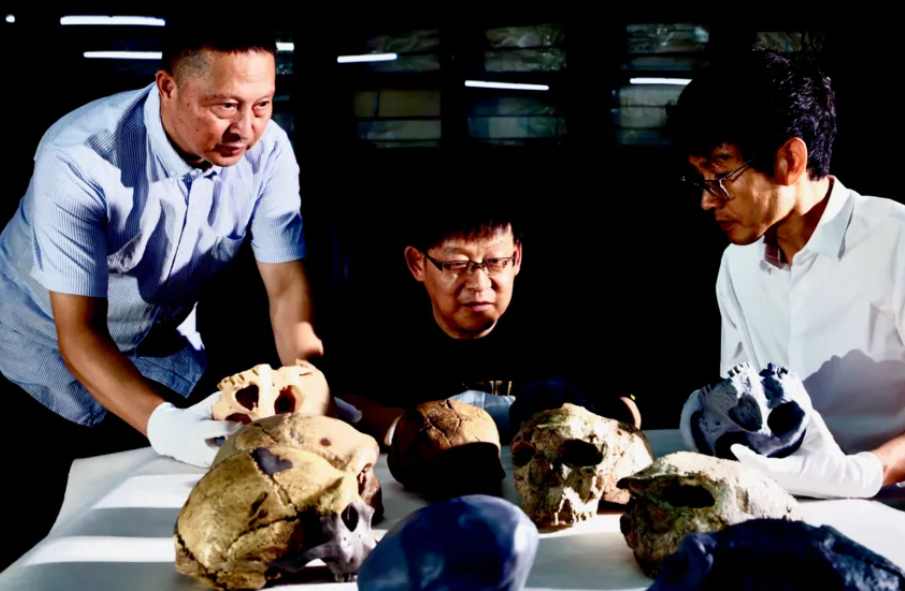
Africa’s Hidden Genetic Diversity
Most news about ancient DNA involves Neanderthals and Denisovans, but some of the most exciting findings are among African populations. Africa is the birthplace of humanity and the most genetically diverse continent on Earth.
Recent studies have turned up evidence that ancient Africans also interbred with other, long-gone human species. These are “ghost populations” of humans, because we don’t have bones or DNA samples from them — we’re looking at their genetic fingerprints only in the DNA of contemporary Africans.
Various African peoples bear evidence of interbreeding with various ghost species. And in West Africa, genetic analysis indicates mixing with an unidentified human species that branched off from modern humans more than 600,000 years ago. Other ghost populations have left their own marks in other parts of Africa.
This totally rewrites the picture of human evolution. It is not just a neat little story of modern humans in Africa and then outside. Instead, multiple human lineages occupied Africa for thousands of years at a time and sometimes mixed with one another leaving behind a genetic hodgepodge of relationships.
Why Africa Matters
Investigating African genetics is important, but also difficult. Ancient DNA does not preserve well in hot, humid climates, meaning that scientists have very few ancient African genomes to study. For the most part, what we do know is based on contemporary African DNA and trying to infer in reverse what must have happened.
But despite these difficulties, progress is being made. They are discovering that African populations were much more migratory than had been realized. These people settled rainforests, deserts, mountains and coasts, each population developing distinct genetic adaptations.
The relevance of African genetic diversity isn’t merely historical — it has immediate implications for medicine today. The vast majority of the genetic research has concentrated on people of European ancestry. But by studying African genetics, scientists can create treatments that are more effective and provide insights into diseases that affect Africans differently.
Rapid Evolution Continues Today
The process didn’t end when modern humans swept out of Africa and spread across the world. Genetic studies have shown that humans are still evolving, only now the evolution can be recent and fast, with changes occurring over centuries or even decades, in really small isolated populations.
Milk Drinking
One well-known scenario is lactose tolerance. In most mammals, the ability to produce lactase — the enzyme needed to digest the sugar in milk — declines after infancy. Historically, most humans did too. But about 10,000 years ago, when people in Europe and some other regions began raising dairy animals as a result of an evolving culture that learned to herd animals for milk along with the development of animal husbandry that made livestock more docile, a genetic mutation developed that enabled the continued production of lactase into adulthood.
This mutation spread very quickly because it conferred upon people a tremendous advantage — the ability to obtain nutrition from food that others couldn’t digest. Today most people of Northern European heritage can drink milk without difficulty, while a majority of people of East Asian, African or Native American ancestry remain lactose intolerant. This is evolution occurring across a few hundred generations.
High Altitude Adaptations
In addition to the Tibetan EPAS1 from Denisovans, other populations evolved adaptations for high altitude independently. Another group of people in the Ethiopian highlands developed an entirely different genetic adaptation to low oxygen. And the Andeans of South America evolved a third suite of adaptations.
All three of these populations — Tibetans, Ethiopians and Andeans — face the same problem (low-oxygen conditions), but have developed different genetic solutions. This is known as convergent evolution, and it illustrates just how adaptable the human genome can be.
Malaria Resistance
In areas where malaria is endemic, the prevalence of several protective genetic factors has reached high frequency. The best known is the sickle cell trait. Having one copy of the sickle cell gene provides resistance to malaria, but two copies cause sickle cell disease.
This represents a genetic trade-off. The gene is bad in some ways, but good in others, so it survives where malaria remains a profound threat.
Examples of Recent Human Evolution
| Gene | Population | Time Frame | Selective Pressure |
|---|---|---|---|
| Lactose tolerance (LCT gene) | Northern Europeans, East Africans | 10,000 years | Dairy farming |
| High altitude adaptation (EPAS1) | Tibetans | 30,000-40,000 years | Low oxygen |
| Sickle cell trait (HBB gene) | Sub-Saharan Africans | 5,000-10,000 years | Malaria protection |
| Light skin pigmentation (SLC24A5) | Europeans | 8,000-10,000 years | Low UV |
| Blue eyes (HERC2/OCA2) | Europeans | 6,000-10,000 years | Sexual selection/UV |
These and other genes are physical evidence that human beings have naturally evolved within relatively short periods of time.
How the Farming Revolution Changed Our DNA
About 10,000 years ago we began the shift from hunting and gathering to farming. This was more than just a lifestyle change: It reshaped human genetics.
Once people settled down and began growing crops, their diets underwent a radical transformation. The researchers hypothesize that these people ate an increasing share of starchy foods, including wheat, rice and corn, but less meat and wild plants. This change in diet created new selective pressures.
Genes that made it easier to digest starches spread in farming populations. The gene AMY1, which is involved in starch digestion, appears to have been selected for lately. Individuals with added copies of this gene can process starches more efficiently — a clear benefit when consuming large amounts of grain.
Farming likewise meant that humans were in much closer contact with animals. Cattle, pigs and chickens and other forms of livestock shared or even lived inside human settlements. This made it easier for illnesses to jump from animals to human beings. Most of the infectious diseases that have killed citizens of historical civilizations such as smallpox, measles and tuberculosis were domesticated animal diseases.
The more people who lived in close quarters, with domestic animals crowding the space, the stronger the evolutionary need for good immune systems. Genes related to immune responses — in defending against infections, for example — have experienced recent natural selection in farming populations. Those whose ancestors farmed for many thousands of years have just slightly different immune systems than people whose own ancestors kept hunting and gathering for a bit longer.
What Makes Humans Special?
By comparing human DNA with that of our nearest relatives — chimpanzees and bonobos — scientists can begin to work out which genetic changes were involved in making us uniquely human.
Chimpanzees are 98-99% identical in DNA to humans. 1-2% may not sound like a lot, but it contains many of the genes that influence brain size, brain development, language ability and other traits specific to our species.
The FOXP2 Gene
One of the most famous is FOXP2, known as the “language gene.” Humans possess a slightly different version of FOXP2 than other primates. Those with mutated forms of this gene typically face significant speech and language impairment. The version of FOXP2 that evolved in humans may have played a role by enabling the development of complex language.
Perhaps curiously, Neanderthals also possessed the same version of FOXP2 that we do. That indicates they may have been capable of some level of complex speech, though it’s unlikely we’ll ever be certain what their language sounded like.
Brain Development Genes
Numerous genes that participate in brain development exhibit signs of accelerated evolution in humans. The ASPM and microcephalin genes, for instance, influence brain size. The human versions of these genes may have helped to create our big, complex brains.
But it’s not just about size. The brains of human beings do not resemble those of other primates in how they are organized or develop. Human brains, of course, take much longer to mature — we have a long childhood compared with other animals and therefore more time to learn.
These days, researchers have pinpointed dozens of the genes that regulate when our brains begin to advance. Tiny alterations in these genes can have outsized effects on the development of brains. Knowing about these changes can allow us to understand how humans have propelled themselves to advanced thinking, planning, art and culture.
What We Still Don’t Know
Despite all that progress, science still can’t completely explain what makes us human. The genes we have found are only pieces of a much larger puzzle. Our uniqueness as a species probably arises from combinations of many genes acting together and cultural evolution superimposed on our genetic inheritance.
There are also the ways in which we differ from apes and all other animals — how much more we humans rely on culture, that is things we learn from others instead of inherit genetically. No other species has culture that’s as complex or changes as quickly as human culture. That interchange between genes and culture makes human evolution uniquely complex.
Genetics and Human Migration
DNA is a bit like a set of breadcrumbs indicating where our forebears travelled. Scientists can track ancient migration routes with astonishing accuracy by comparing DNA from various populations.
All humans not only outside Africa but within it are descended from a relatively small group that left the continent between 60,000 to 70,000 years ago. From there, humans spread across the world with remarkable speed. Australia was reached by 50,000 years ago, Europe by about 45,000 years ago and the Americas at least 15-20,000 but possibly more than that (early dates for the Americas are elusive).
Genetic research has unveiled some of the secrets of these migrations. For instance, Native Americans are thought to be descended from a population of people who crossed over from Siberia into Alaska and then spread southward through the Americas. DNA reveals they arrived in multiple waves, not all at once.
Genetically, this expansion has also been described through the Pacific. Polynesians in outrigger canoes crisscrossed enormous swaths of distance, settling islands across millions of square miles of ocean. Their genetic material reveals where they came from and which islands they occupied first.
The Bottleneck Effect
Genetics does some interesting things when small groups leave and go somewhere else. These founding populations will contain only a subset of the genetic diversity present in the source population. This is what’s known as a “bottleneck effect.”
You can observe this in world genetic diversity. African populations have the greatest genetic diversity because they are where humans evolved and lived for a very long time. As populations spread further away from Africa, they passed through several bottlenecks which caused diversity to reduce. Genetic diversity is lower when humans finally walked into South America or far-off Pacific islands.
Such patterns help scientists in piecing together ancient migration routes and when those were established. DNA works like a clock — the more differences among populations, the longer they have been separated.
The Future of Human Evolution: Where Are We Going?
Will humans continue evolving? Absolutely, but the forces that are driving evolution are different today from those of yesterday.
Modern medicine has upended the evolutionary game. Thanks to advances in medicine, even people with genetic conditions that would have been fatal a century ago can now survive and procreate, placing their genes into the world. Characteristics that could once have been “weeded out” by natural selection are now preserved in the gene pool.
So, are we “degrading” genetically? Not necessarily. Evolution doesn’t necessarily mean getting “better” — it’s about adapting to the environment. Presently our environment is one of modern medicine, and now we are evolving for that.
New Selective Pressures
Emerging life puts forward new evolutionary pressures, but they are also slow. For example:
Disease Resistance: We have selective pressure for new diseases, e.g. HIV. Some genetic variants naturally resist HIV. Over generations, these variants could be more prevalent.
Diet: Our diets are a lot more modern than those of our ancestors. That could exert pressure for genetic changes in metabolism, though we won’t see those develop for thousands of years.
Timing of Reproduction: People in rich countries are having children later. In theory, this might change which genes are passed down, but the effect would be subtle and slow.
Genetic Engineering
The biggest question about the future of human evolution has to do with genetic engineering. With technologies like CRISPR, scientists can now edit genes with precision. Might we be able to begin steering our own evolution?
This raises huge ethical questions. Should we edit human embryos to remove disease genes? What about enhancing traits such as intelligence or athleticism? Those questions will have different answers in different societies, and the stakes are high.
Some scientists are concerned that they will create genetic inequality — a world where rich people are able to afford genetic enhancements while the poor cannot. Others say we already “edit” ourselves through medicine and technology, and this is just more up close.
Whatever else happens, genetics is likely to increasingly influence human evolution in the future. We are no longer exclusively passive recipients of natural selection — we are increasingly active shapers of our genetic future.
For more information on the ethical implications of genetic engineering, visit the National Human Genome Research Institute.
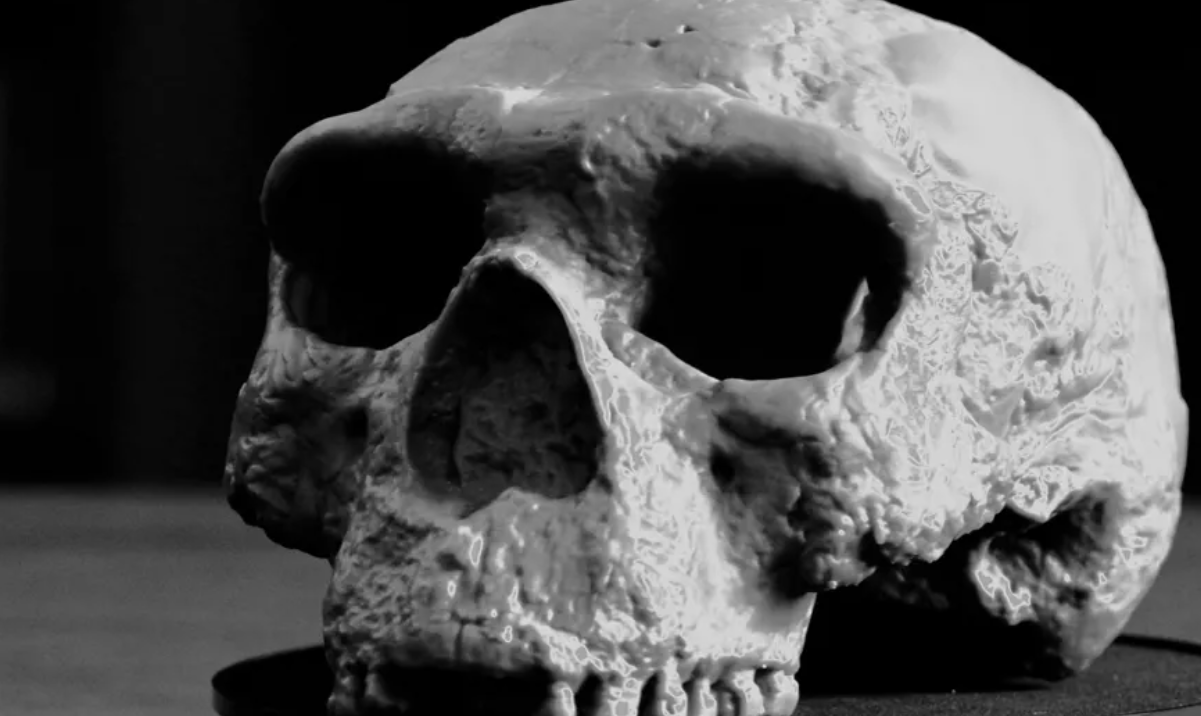
Frequently Asked Questions About Genetics and Human Evolution
What percent DNA do humans share with Neanderthals?
Non-African humans today have between 1 and 2 percent Neanderthal DNA. This DNA resulted from interbreeding that occurred when early modern humans left Africa and met Neanderthals in Europe and Asia.
Are humans still evolving today?
Yes, humans are still evolving. Recent evolution comprises lactose tolerance in dairy-farming populations, responses to high-altitude in Tibetans and Ethiopians, and disease resistance in various populations. Evolution is not as rapid as it was in our ancestral past because of modern medicine and technology, but it has not come to a standstill.
How come Africans don’t have any Neanderthal DNA?
Neanderthals inhabited Europe and Asia, not Africa. The interbreeding between modern humans and Neanderthals occurred after some humans had left Africa, but before they had dispersed throughout the continents. That means people whose ancestors never left Africa lack any trace of Neanderthal ancestry.
Can DNA tests pinpoint where your ancestors lived?
DNA testing can provide you general regions in which your ancestors probably lived, but it is not perfectly accurate. Those tests compare your DNA to reference populations, but people have been moving and mixing for thousands of years, so exact locations can be hard to pin down.
How do scientists extract DNA from fossils?
Researchers recover DNA from ancient bones and teeth by grinding small samples and applying special chemicals to isolate the DNA. The DNA is often degraded and entangled with bacterial DNA, requiring sophisticated procedures to recognize and reconstruct the ancient human’s DNA sequences.
What’s the difference between Neanderthals and Denisovans?
Both were humans, as was the Neanderthal and the Denisovan species, but all had different configurations of that ancestry. Neanderthals inhabited Europe and western Asia, and the Denisovans occupied eastern and southeastern Asia. They had distinct physical characteristics and genetic makeup, but they both interbred with modern humans.
Will genetic engineering end the evolution of humanity?
Genetic engineering technologies, such as CRISPR, could potentially impact human evolution because they enable us to modify genes directly. But this raises enormous ethical questions and most countries either limit or prohibit genetic editing of human embryos. The long-term impact remains uncertain.
How long does DNA last in bones?
Temperature is the greatest influence on the rate of DNA degradation. DNA, in cold, dry climates can last hundreds of thousands of years. In warm, moist habitats it degrades much more quickly — in a few thousand years, typically. That’s why we have much more ancient DNA from Europe and Siberia, for example, than tropical regions.
The Story Continues
The story of human evolution is a very different one than we thought, as genetics has expanded our picture of the past. Each passing year serves to complicate the human story with fresh evidence.
We now understand that human evolution wasn’t a linear progression from ancient apes to ourselves. It was a disordered bush with many twiggy branches: different species of people that lived at the same time, sometimes met and had sex, sometimes went extinct.
The DNA within each of us is a mosaic. It carries fragments from ancient Africans, Neanderthals, Denisovans and perhaps other human species we don’t yet know about. Our ancestors persevered because they were a mutable and imaginative lot, always learning from whoever was nearby — even other kinds of humans.
Now, modern genetics is providing us the means to read this history in our very own cells. And as technology continues to advance and we sequence more ancient DNA, we’ll learn even more about who we are and how we came to be.
So let’s face it: We’re the ones writing the next chapter in human evolution, and for the first time in history we’re actually able to be conscious about being part of that story. How we decide to use this knowledge will not only mold our understanding of the past, but determine humanity’s future.
The rewriting of human evolution in light of genetics is not over — in many respects it has only begun. Every ancient bone found, every genome sequenced and every genetic analysis conducted adds more information to the marvel of humanity’s origin story. And we might not yet have discovered the most exciting finds.
